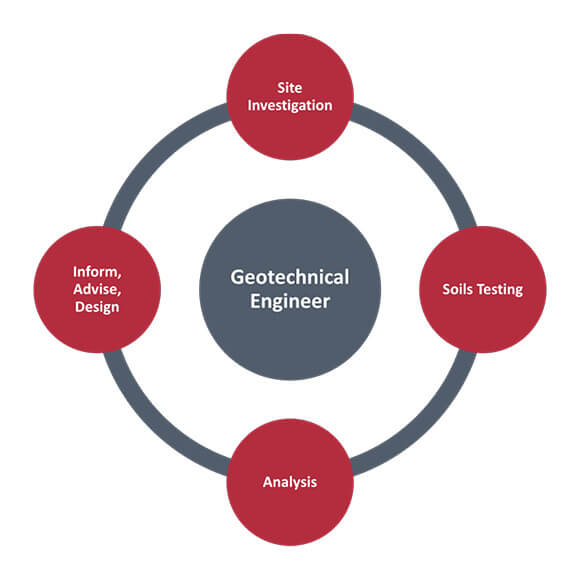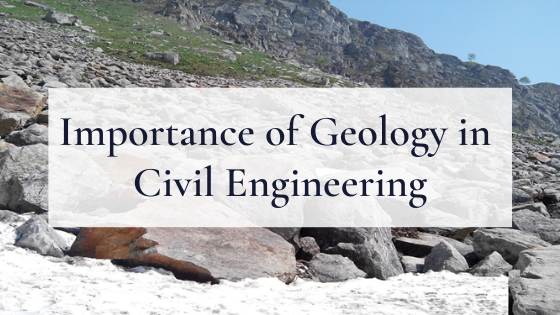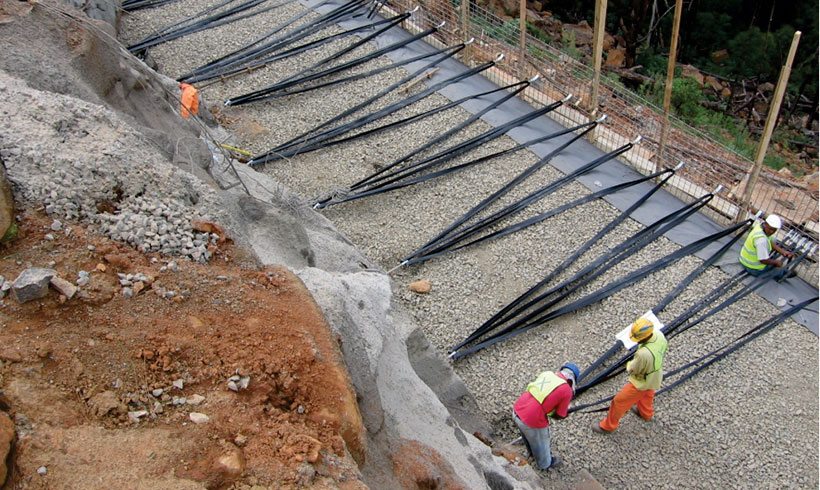All About Geotechnical Engineering For Construction Projects
A Biased View of Geotechnical Engineering For Construction Projects
Table of ContentsThe Buzz on Geotechnical Engineering For Construction ProjectsThe Ultimate Guide To Geotechnical Engineering For Construction ProjectsIndicators on Geotechnical Engineering For Construction Projects You Should KnowThe Best Strategy To Use For Geotechnical Engineering For Construction Projects4 Simple Techniques For Geotechnical Engineering For Construction ProjectsThe Buzz on Geotechnical Engineering For Construction ProjectsFascination About Geotechnical Engineering For Construction Projects
Principles and Method of Ground Improvement. Ground Renovation Concepts And Applications In Asia. Style evaluation in rock auto mechanics.Cengage Knowing, Stamford, 666 p. Atkinson, J., 2007. The auto mechanics of soils and structures. Taylor & Francis, N.Y., 442 p. Drifting Offshore Wind Wind Turbines: Responses in a Sea state Pareto Optimum Styles and Financial Evaluation, P. Sclavounos et al., October 2007. Nicholson, D, Tse, C and Cent, C. (1999 ). The Observational Technique in ground design principles and applications.
The Only Guide for Geotechnical Engineering For Construction Projects
Lab and field testing plays an essential role in this process. By extracting examples from the earth's subsurface and applying a suite of examinations, geotechnical engineers can predict the practices of soil layers and evaluate their viability for different construction efforts. The significance of geotechnical engineering in civil design can not be overstated, attributable to a number of aspects: The first action in any type of geotechnical research study involves figuring out the soil kind at the building site.
Comprehending these qualities makes sure that just suitable soil kinds are selected for the growth, consequently averting potential architectural failings. The structure acts as the bedrock of any kind of building and construction job. Selecting the suitable foundation type is a decision that rests on the detailed evaluation supplied by geotechnical engineering. This makes sure the long life and security of frameworks by suiting the loads they will bear.

Geotechnical website investigation is a crucial step in the preparation and execution of any type of building job. It involves the collection and evaluation of information associated with the physical properties of soil and rock beneath a proposed construction site. This information is crucial for the style and building and construction of secure, secure, and lasting frameworks.
The 45-Second Trick For Geotechnical Engineering For Construction Projects
, likewise understood as subsurface expedition, includes a series of activities aimed at identifying the soil, rock, and groundwater conditions at a construction website. The primary purposes are to recognize prospective geotechnical threats, assess the engineering residential properties of subsurface products, and supply referrals for the layout and construction of structures, maintaining wall surfaces, and other structures.
This may consist of geological maps, aerial pictures, previous examination reports, and historic information. The workdesk study helps in identifying prospective geotechnical concerns and intending the subsequent fieldwork. Following the workdesk research study, a website reconnaissance is performed to aesthetically inspect the site and its surroundings. This includes observing the topography, drain patterns, existing frameworks, greenery, and any indications of instability or disintegration.
Geotechnical Engineering For Construction Projects - The Facts
Shallow examination pits are excavated to straight observe and example the soil and rock. This method serves for examining the top layers of the subsurface and determining near-surface threats. Non-invasive geophysical techniques, such as seismic refraction, ground-penetrating radar (GPR), and electrical resistivity tomography (ERT), are made use of to map subsurface problems and find abnormalities.
Dirt and rock examples collected throughout the area examination are subjected to research laboratory screening to identify their physical and mechanical residential properties. These tests supply necessary information for geotechnical evaluation and style.
The main advantage of geotechnical site examination is guaranteeing the safety and security of structures. By comprehending the subsurface problems, engineers can design this link foundations and other structural elements that can stand up to the loads and ecological pressures they will go through. This decreases the risk of settlement, subsidence, and structural failing.
Some Known Facts About Geotechnical Engineering For Construction Projects.
This makes sure reliable and risk-free construction methods. Geotechnical website examinations are often required by developing codes and guidelines.
This information is indispensable for task supervisors, designers, and contractors in developing practical timetables, budgets, and backup plans. Geotechnical Engineering for Construction Projects. High-Rise Building in a Coastal AreaIn a coastal city, a skyscraper property building was intended on a website with believed loose sand down payments and a high water table. A thorough geotechnical examination, consisting of borehole boring, CPT, and geophysical surveys, was carried out
The Main Principles Of Geotechnical Engineering For Construction Projects
Based on these findings, the structure style was modified to include deep heap foundations prolonging right into steady strata, and ground enhancement strategies, such as vibro-compaction, were implemented to mitigate liquefaction threats. This aggressive technique ensured the security and stability of the building while staying clear of pricey post-construction removal. Infrastructure Growth on a Sloping TerrainA major facilities task, involving the building of a highway and bridges, was intended on a hilly surface with high inclines.

The Leaning Tower of Pisa (Italy), a legendary architectural marvel, is infamous for its unplanned tilt from significant geotechnical problems. The tower's structure was improperly designed to handle the soft, unpredictable soil under it, bring about uneven negotiation and its distinctive lean. Our globe is dotted with outstanding infrastructure projectsfrom towering high-rise buildings to stretching bridgesall standing testimony to the development of the numerous construction devices and techniques offered.
Geotechnical engineering is a specialized field within civil design that concentrates on researching the behavior of earth materials. This branch digs deep right into the groundinvestigating how the soil, rock, and groundwater at a building and construction site can influenceand be affected bythe facilities that we put up on and right into them. Prior to a single brick is laid or a concrete foundation put, geotechnical designers probe right into the earthgathering vital data concerning the website's dirt make-up, rock structure, and groundwater levels.
Geotechnical Engineering For Construction Projects Things To Know Before You Get This

is a device utilized to evaluate the honesty and load-bearing capacity of stacks throughout installation, leveraging the concept of wave propagation. It maximizes construction effectiveness by supplying real-time analyses, thus ensuring secure and effective stack foundations. One of the sensible applications of geotechnical engineering includes making a decision and implementing the ideal techniques for foundation construction.
Stack driving represents even more than the mere act of Going Here putting structural components right into the ground. As a matter of fact, it is a very carefully managed procedure of transferring a framework's load past the less secure dirt layers better to the surfacedown to the more considerable strata that exist underneath. When it comes to pile driving, think about exactly how geotechnical engineers expertly use this strategy to equally distribute the framework's weight.